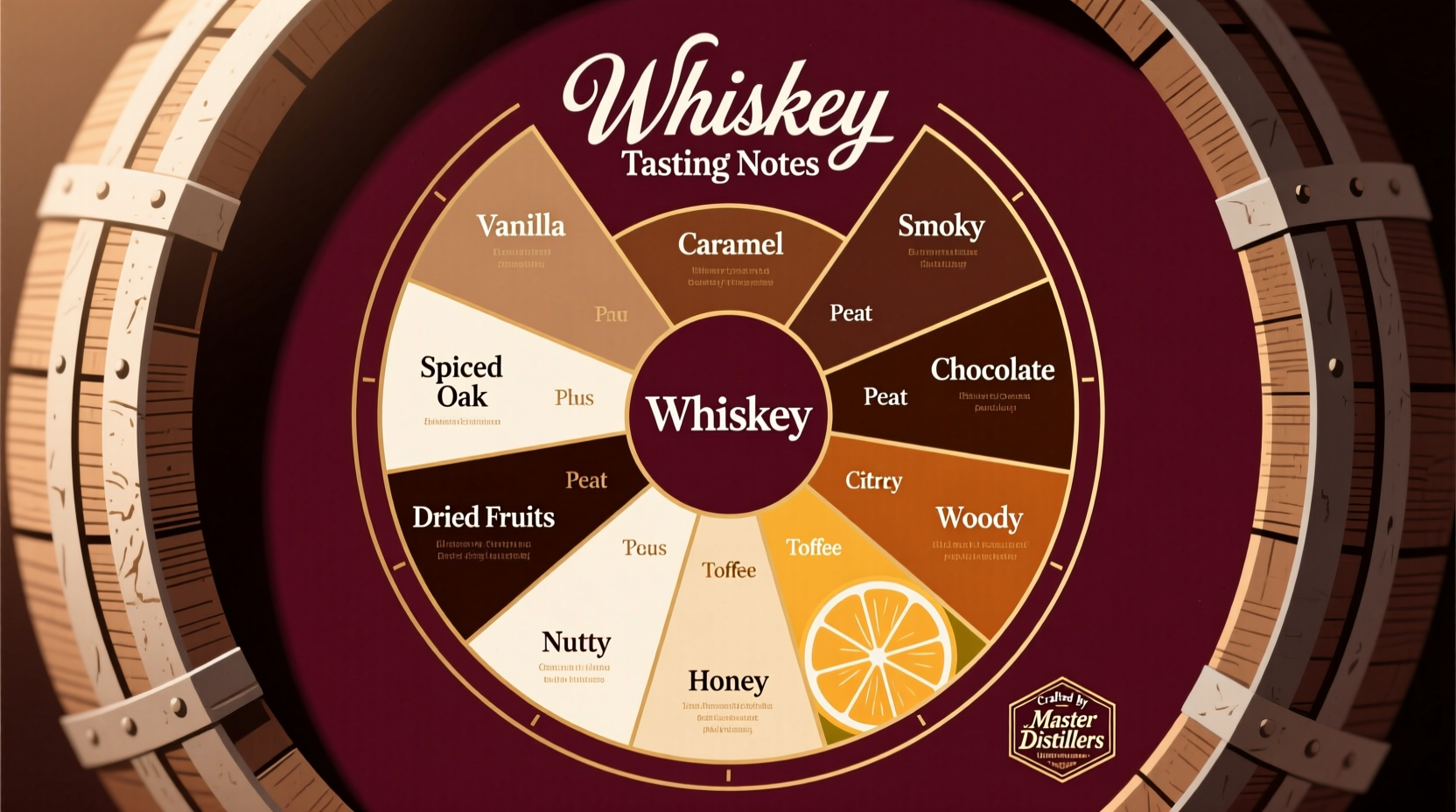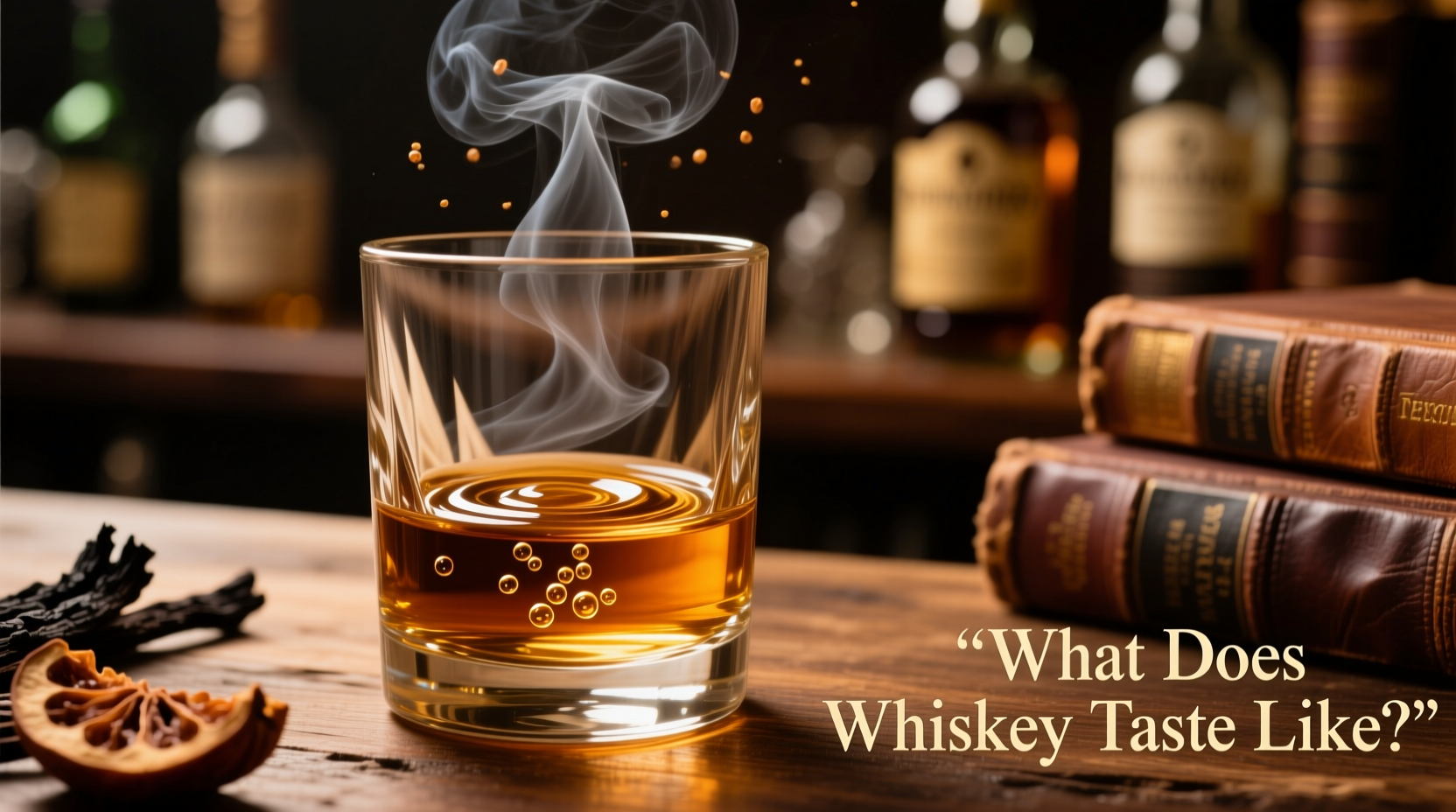Ever wondered what whiskey actually tastes like before taking your first sip? Understanding whiskey's flavor profile isn't just about the burn—it's about recognizing the intricate dance of flavors developed through careful distillation and aging. Whether you're preparing for your first tasting or looking to deepen your appreciation, this guide breaks down exactly what to expect on your palate.
The Building Blocks of Whiskey Flavor
Whiskey's taste profile forms through three critical stages: grain selection, distillation, and barrel aging. Unlike clear spirits, whiskey gains most of its distinctive flavors during maturation in wooden casks, where chemical reactions transform raw distillate into a complex beverage.
At its foundation, whiskey delivers:
- Base notes: Caramel, vanilla, and toasted oak from barrel aging
- Grain character: Depending on mash bill (corn, barley, rye, or wheat)
- Alcohol warmth: That distinctive warming sensation (not burning when properly aged)
- Finish: Lingering flavors that develop after swallowing
How Whiskey Types Create Different Taste Experiences
Not all whiskeys taste alike—regional production methods create dramatically different flavor profiles. Understanding these differences helps set proper expectations for your tasting experience.
| Whiskey Type | Primary Flavor Notes | Distinctive Characteristics |
|---|---|---|
| Scotch (Single Malt) | Smoky, peaty, heather, dried fruit | Islay varieties feature intense medicinal smoke; Speyside offers honeyed elegance |
| Bourbon | Vanilla, caramel, oak, baking spices | Sweet profile from corn mash bill and new charred oak barrels |
| Irish Whiskey | Light fruit, honey, toasted wood, floral notes | Triple-distilled smoothness with subtle complexity |
| Rye Whiskey | Spicy, pepper, citrus, herbal notes | Bold spiciness from minimum 51% rye content |
This flavor variation stems from production differences documented by the Institute of Brewing and Distilling, which tracks how regional techniques create distinctive chemical compounds in the final product.
The Whiskey Aging Timeline: How Flavor Develops
Whiskey doesn't magically acquire its complex flavors—it undergoes a precise chemical evolution during barrel aging. The USDA Agricultural Research Service has documented how specific compounds develop at different aging stages:
- 0-2 years: Raw spirit character dominates with harsh alcohol notes
- 3-5 years: Vanilla and caramel notes emerge as wood compounds dissolve
- 6-10 years: Optimal balance where wood tannins mellow and integrate
- 10+ years: Risk of over-aging where wood tannins can dominate
During this process, whiskey loses about 2% of its volume annually to evaporation (the "angel's share"), while simultaneously extracting flavor compounds from the wood. The type of barrel—whether first-fill bourbon casks or sherry-seasoned butts—dramatically influences which flavors develop.

Tasting Whiskey Like a Professional: A Practical Guide
Knowing what whiskey tastes like requires proper technique. Most beginners miss subtle flavors because they approach tasting incorrectly. Follow this professional method to fully experience whiskey's complexity:
- Choose the right glass: A tulip-shaped glass concentrates aromas
- Observe the color: Deeper amber suggests longer aging in charred barrels
- Swirl gently: Releases volatile compounds without evaporating alcohol
- Nose carefully: Alternate short and long sniffs to detect different compounds
- Sip deliberately: Let whiskey coat your mouth before swallowing
- Assess the finish: Note how flavors evolve over 30-60 seconds after swallowing
Adding a few drops of water can open up flavors by reducing alcohol's numbing effect on taste receptors—a technique validated by research published in the Proceedings of the National Academy of Sciences. The water helps hydrophobic flavor compounds disperse more effectively across your palate.
Context Matters: How Tasting Conditions Affect Perception
Your environment significantly impacts whiskey tasting—a factor often overlooked by beginners. According to sensory research from the Institute of Food Technologists, these conditions alter flavor perception:
- Temperature: Whiskey below 60°F numbs subtle flavors; above 70°F intensifies alcohol burn
- Glassware: Wide bowls disperse aromas; narrow openings concentrate them
- Palate cleansers: Plain crackers reset your taste buds between tastings
- Time of day: Morning tastings often detect more subtle notes than evening sessions
Professional tasters follow strict protocols to maintain consistency, recognizing that even room lighting can influence flavor perception. The optimal tasting environment features neutral lighting, no strong odors, and minimal distractions.
Developing Your Whiskey Palate: Practical Tips
Recognizing whiskey flavors improves with practice. Start with these actionable steps:
- Keep a tasting journal noting specific flavors you detect
- Compare similar styles side-by-side (e.g., two bourbons)
- Use a whiskey flavor wheel to expand your descriptive vocabulary
- Practice identifying base notes before seeking subtler elements
- Rest your palate between tastings with water and plain crackers
Don't worry if you initially only taste "alcohol"—most beginners need multiple tastings to recognize underlying flavors. As your palate develops, you'll start distinguishing between similar notes like "vanilla" versus "caramel" versus "butterscotch."
Common Whiskey Tasting Misconceptions
Several myths persist about whiskey flavor that set unrealistic expectations:
- "Older is always better" - Over-aged whiskey can become overly woody
- "Neat is the only proper way" - Water often reveals hidden flavors
- "Peat equals smoke" - Peat creates medicinal, earthy notes beyond simple smoke
- "All bourbon is sweet" - Higher-rye bourbons offer significant spice notes
Understanding these nuances helps set realistic expectations for what whiskey tastes like across different styles and price points.
What First-Time Whiskey Drinkers Should Expect
If you're trying whiskey for the first time, anticipate these sensory experiences:
- An initial alcohol warmth that shouldn't feel like burning (indicates quality)
- Basic sweet notes (caramel, vanilla) most beginners detect first
- A finish that lasts 15-30 seconds in quality expressions
- Flavor evolution as the whiskey opens up in your glass
Start with lighter styles like Irish whiskey or lower-proof bourbons before exploring heavily peated Scotches. Remember that palate development takes time—your ability to detect subtle flavors will improve with each tasting experience.











 浙公网安备
33010002000092号
浙公网安备
33010002000092号 浙B2-20120091-4
浙B2-20120091-4